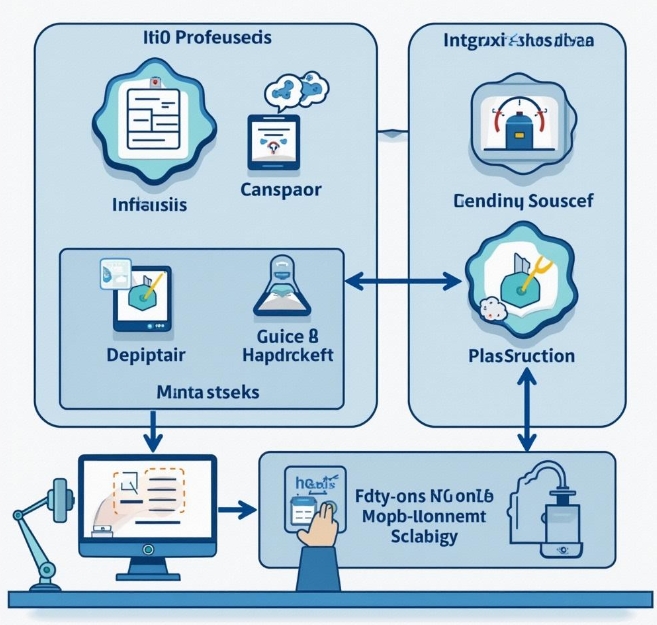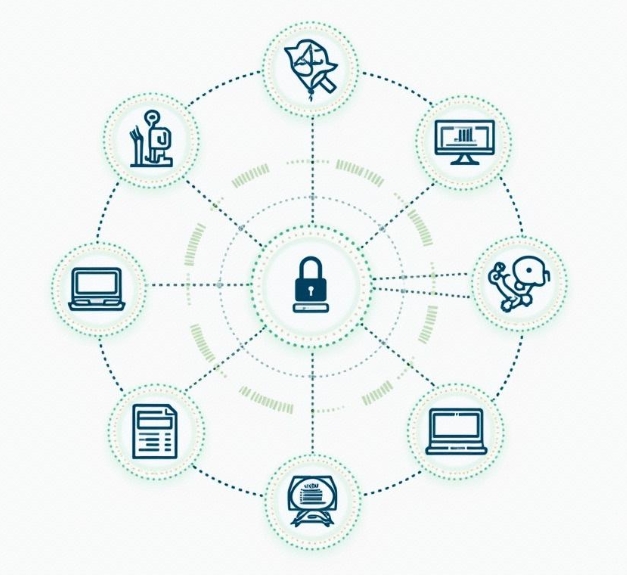How to Test and Verify IoT Projects
- latest articles
- 1.DApp Development & Customization: Merging Diverse Market Needs with User Experience 2.Analysis of the Core Technical System in DApp Project Development 3.How to achieve cross-chain interoperability in Web3 projects? 4.How does the tokenization of points reconstruct the e-commerce ecosystem? 5.How to Set and Track Data Metrics for a Points Mall? 6.What is DApp Development? Core Concepts and Technical Analysis 7.Inventory of commonly used Web3 development tools and usage tips 8.Development of a Distribution System Integrated with Social E-commerce 9.Six Key Steps for Businesses to Build a Points Mall System 10.What is DApp Development? A Comprehensive Guide from Concept to Implementation
- Popular Articles
- 1.Future Trends and Technology Predictions for APP Development in 2025 2.Analysis of the DeFi Ecosystem: How Developers Can Participate in Decentralized Finance Innovation 3.From Zero to One: How PI Mall Revolutionizes the Traditional E-commerce Model 4.DAPP Development | Best Practices for Professional Customization and Rapid Launch 5.How to Develop a Successful Douyin Mini Program: Technical Architecture and Best Practices 6.Recommended by the Web3 developer community: the most noteworthy forums and resources 7.From Cloud Computing to Computing Power Leasing: Building a Flexible and Scalable Computing Resource Platform 8.Shared Bike System APP: The Convenient Choice in the Era of Smart Travel 9.How to Create a Successful Dating App: From Needs Analysis to User Experience Design 10.From Design to Development: The Complete Process of Bringing an APP Idea to Life
The Internet of Things (IoT) is a technology that connects objects to objects and objects to people via the internet. With the continuous advancement of technology, IoT applications are becoming increasingly widespread across various fields, from smart homes to industrial automation, and from smart cities to intelligent health. The proliferation of IoT technology has led to higher demands for interconnectivity between devices, as well as the reliability, real-time performance, and security of data transmission. Therefore, how to test and validate IoT projects to ensure system stability, reliability, and security has become a critical issue.
This article will explore how to test and validate IoT projects from multiple perspectives, including device-layer testing, network-layer testing, data-layer testing, security testing, and user experience testing, and introduce some common testing methods and tools.
1. Testing Layers of IoT Projects
In IoT projects, testing can be categorized into the following layers:
1.1 Device Layer Testing
The device layer is the foundational part of an IoT project, typically including hardware devices such as sensors, actuators, and gateways. The goal of device layer testing is to verify whether these hardware devices can function properly, meet design requirements, and maintain stability, especially during prolonged use and in complex environments.
Device layer testing includes, but is not limited to, the following aspects:
Hardware Functionality Testing: Testing the basic functions of hardware such as sensors and actuators, such as whether sensors can accurately collect data and whether actuators can correctly respond to control commands.
Durability Testing: Testing the stability of devices during prolonged operation, checking whether failures occur due to aging, temperature, humidity, and other factors.
Interoperability Testing: IoT devices often need to interact with other devices or platforms; testing whether devices can communicate smoothly with each other.
Power Consumption Testing: IoT devices typically require low power consumption, especially in devices that need to operate for extended periods, making power consumption testing particularly important.
1.2 Network Layer Testing
The network layer is the core part of communication between devices in an IoT system. The focus of network layer testing is to verify whether devices can reliably transmit data in different network environments and how they handle various network challenges.
Network layer testing includes:
Network Coverage Testing: Testing the performance of IoT devices in different network environments, such as Wi-Fi, Bluetooth, Zigbee, and LoRa. Evaluating device performance under varying signal strengths, frequency bands, and network loads.
Communication Protocol Testing: IoT devices often use different communication protocols (such as MQTT, CoAP) for data transmission; verifying whether these protocols can transmit data efficiently and reliably.
Latency and Bandwidth Testing: Testing network transmission latency, bandwidth, and throughput to ensure data can be transmitted within the specified time and meet expected quality standards.
1.3 Data Layer Testing
The data layer primarily involves the storage, processing, and transmission of data in an IoT system. At this level, the focus of testing is to verify the integrity, accuracy, and timeliness of data.
Data layer testing includes:
Data Accuracy Testing: Verifying whether the data collected by sensors is accurate and whether there are deviations or noise.
Data Consistency Testing: Verifying whether the data stored and processed in the system remains consistent and whether data loss or errors occur.
Data Processing Performance Testing: Testing the efficiency of data during transmission, processing, and storage, especially under high data volumes and concurrent conditions, to ensure system stability.
1.4 Security Testing
The security of IoT systems is a very important consideration. As more devices connect to the internet, IoT systems face increasing security threats. Therefore, security testing for IoT projects is crucial.
Security testing includes:
Data Encryption and Privacy Protection: Verifying whether data during transmission is encrypted and whether effective privacy protection measures are in place.
Authentication and Authorization: Testing whether IoT devices have effective authentication mechanisms to ensure only authorized devices and users can access the system.
Attack Resistance Testing: Simulating various common security attacks on the system, such as DDoS attacks, vulnerability scanning, and eavesdropping, to ensure the system has sufficient defense capabilities.
1.5 User Experience Testing
User experience is one of the key factors for the success of IoT systems, especially in fields like smart homes and intelligent health. The ease of use, response speed, and stability of devices directly impact user experience.
User experience testing includes:
Device Installation and Configuration Testing: Testing whether the installation and configuration process of devices is simple and easy to understand and can be completed quickly.
Operation Response Testing: Testing the response speed of devices after user operations, checking whether they can execute commands quickly and accurately.
System Compatibility Testing: Testing the compatibility of IoT devices with different operating systems and platforms to ensure devices can operate across various devices and platforms.
2. Common Testing Methods and Tools
Using appropriate testing methods and tools is very important in the testing process of IoT projects. Below are some common testing methods and tools:
2.1 Automated Testing
Automated testing is a commonly used testing method in IoT projects, especially in hardware device testing and data transmission testing. Automated testing can improve testing efficiency and accuracy, offering advantages particularly in large-scale testing.
Common automated testing tools include:
Robot Framework: A keyword-based automated testing framework that can be used to test the functionality and performance of IoT devices.
Jenkins: An open-source automation integration tool that helps automate the execution of test cases and supports continuous integration.
2.2 Simulation Testing
Simulation testing involves testing by simulating various scenarios in real environments. In IoT projects, simulation testing can be used to simulate different network environments, device failures, etc., to test system performance under abnormal conditions.
Common simulation testing tools include:
Cisco Packet Tracer: A tool for network simulation that can simulate the performance of IoT devices in different network environments.
Omnet++: A network simulation tool that can be used to simulate the communication and data transmission processes of IoT devices.
2.3 Performance Testing
Performance testing is very important in IoT projects, especially in large-scale IoT systems. Performance testing helps verify system stability and response speed under different loads and network environments.
Common performance testing tools include:
Apache JMeter: An open-source performance testing tool that can be used to test network latency, bandwidth, and other performance metrics of IoT systems.
Wireshark: A network protocol analysis tool that can be used to capture and analyze data packets of IoT devices, detecting communication issues.
3. Summary
Testing and validation of IoT projects is a complex and multi-layered process involving devices, networks, data, security, and user experience, among other aspects. To ensure the stability, reliability, and security of IoT systems, comprehensive testing is required at all levels, along with the selection of appropriate testing methods and tools.
As IoT technology continues to develop, the demand for testing and validation will also increase. Through precise testing and validation, we can identify potential issues in advance, improve the performance and user experience of IoT systems, and ensure the successful implementation of projects.
-

How to Use IoT Development to Enhance Supply Chain Efficiency
With the rapid development of the global economy and the deepening of digital tr···
-

Development and Innovation of the Internet of Things in the Healthcare Sector
With the rapid advancement of information technology, the Internet of Things (Io···
-

Data Storage and Analysis Methods in IoT Development
The Internet of Things (IoT) is one of the most revolutionary innovations in tod···

 Blockchain
Blockchain












